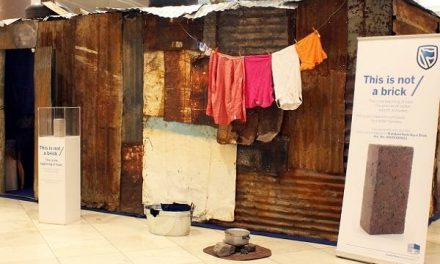
Bad weather to the rescue of a beleaguered airline
Bad weather to the rescue of a beleaguered airline
An approach into Hosea Kutako International Airport late Tuesday afternoon, again demonstrated the strangle-hold the reigning weather pattern has on our rainfall season. The flight from Johannesburg cruised at an altitude of 36,000 feet which is about 3000 feet higher than usual. This could possibly be to avoid a jetstream flowing across the sub-continent from west to east. Jetstreams are notorious for their impact on fuel consumption, and for their unpredictability.
The central Kalahari plains were devoid of any cloud. But about 100 nautical miles west of the Botswana-Namibia border, some significant cloud formation was encountered. This improved the further west we flew. At about 100 nautical miles east of Windhoek, the cloud cover improved to about six octas but it was noticeable that the cloud layer was at least another 15,000 feet below the aircraft. Airliners usually start their descent at this point. Closer to Windhoek, a second layer of cloud was encountered above the main layer. I estimate this was around 25,000 feet. The cloud type was alto stratus, drawn out like a blanket, and just as flat on top as the Kalahari plains themselves. Interestingly, the primary layer, lower down, although showing some good convection, did not pierce this layer.
This season we have seen good cloud formation in the lower levels, but invariably it is pushed down by a high pressure layer above 25,000 feet. This layer is both colder than normal and very dry. Whatever moisture happens to penetrate Namibia’s interior between 10,000 and 20,000 feet, the so-called alto levels, is prevented from rising by convection. The result is the disappointing falls we have experienced since Christmas.
But to everybody’s amazement, shortly after we landed, a very significant storm broke out over the airport. This continued for at least half an hour and I expected the shower to register about one inch of precipitation, some 25mm. I also noticed that the bulk of the storm was actually some distance north west of the airport, and sleets of rain appeared further away on either side of the airport road.
However, once back in Windhoek, it transpired that the rain in the city itself only managed to produce about 6mm. This again is typical of the season so far. Relatively good falls are experienced in some places but these showers are very isolated. The observation is that the burst at the airport originated from the modest cloud formation I noticed during the approach, provides some indication that even these restricted clouds can produce precipitation of some significance.
Seeing that it is such a dry season and seeing that water, or the lack of it, has an overall demanding bearing on our economy, I decided to follow up on Thursday.
And this is where I found the biggest weather surprise. Speaking to the people responsible for weather observation at Hosea Kutako, we were most amazed to find out the automatic weather station at the airport is not functioning. Out of service was the reply from the Duty Observer. The manual weather station, and any manual weather observations, have been discontinued some years back.
This bring me to a rather unpleasant conclusion. How do we manage to receive large airliners on a daily basis if there is no input of weather detail from the destination airport? The last so-called sigwax, i.e. significant weather report for Hosea Kutako is dated 07 February. And the type of weather I personally observed shortly after landing on Tuesday, certainly qualifies as “significant weather.” If our approach and landing was half an hour late, we certainly would not have enjoyed the last part of the flight. Simply put, the current weather conditions at Hosea Kutako Airport on Tuesday afternoon definitely merited an updated sigwax report. If we came in a bit later, the severe conditions that prevailed then, would certainly have increased the landing risk.
Weather analysis and forecasts are a key component of aviation safety. They are also crucial elements enforced by the International Civil Aviation Organisation, or ICAO. If a country is unable to provide a quality meteorological service, it runs the risk of being black-listed by ICAO. When that happens, all international air travel is prohibited. If the Namibian Meteorological Service fails to provide and maintain a constant weather service for Hosea Kutako, it will certainly raise many eyebrows in ICAO circles. And if Namibia is black-listed for safety reasons, as has happened to several African countries last year, we lose all flying rights into South Africa, Angola and Europe.
It’s a slightly ridiculous take on the situation but perhaps that is the strategy after all: fall foul of ICAO so that we are prevented from entering European airspace and then we have a good excuse for dropping the loss-making routes.









































